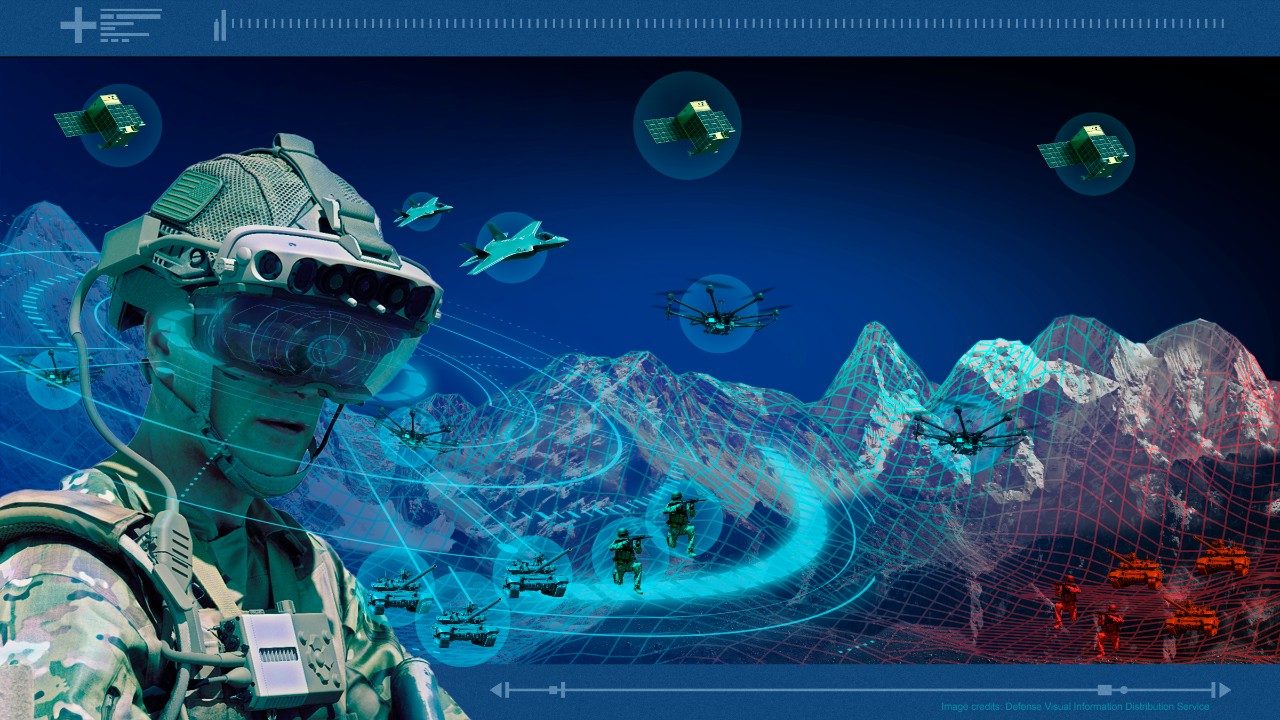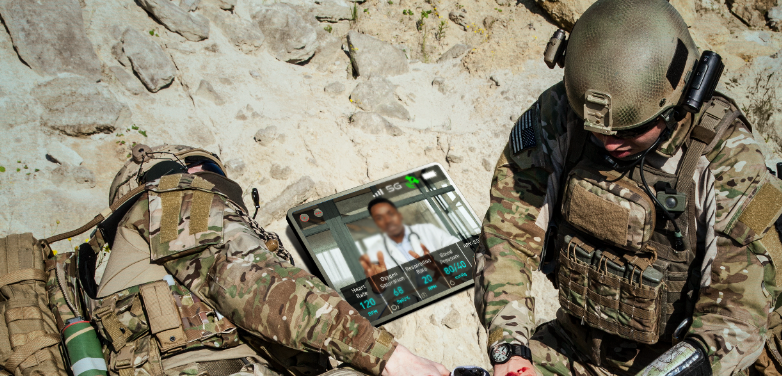The Internet of Things (IoT) has become familiar to many of us in our everyday lives: connected watches monitor heart condition, smart thermostats that precisely regulate temperature and refrigerators that can tell us when we need to buy milk.
“For the military, the Internet of Military Things (IoMT) presents an opportunity to enhance situational awareness for forward-deployed troops, track tons of cargo moving across the globe and provide first responders with vital signs for injured personnel,” said Dawna Morningstar, director of NextGen Solutions and Advanced Communications at Lockheed Martin Space. “Driven by space technologies, IoMT can unify networks to provide incredible capabilities to our warfighters beyond line of sight, even in the most austere and contested environments.”
Here are four military use cases for the IoMT-connected battlespace:
1. Augmented Reality for the Front Line
Pokémon GO, the viral game sensation, was one of the first mass appeal applications of Augmented Reality (AR) that engaged millions around the world to find things in their own physical environment using a smartphone camera and an AR overlay.

For the military, vital information can be projected using AR headsets already in development. Imagine being able to see real-time information about the terrain, weather conditions and being able to quickly distinguish friend from foe.
Today, service members rely on the wildly successful Blue Force Tracker service which provides a low data-rate service to identify friendly forces as well as transmit small amounts of text or imagery. In the near future, we see a pressing need for highly reliable, protected communications for new applications like wearables that could relay vital command information or targeting data.
2. Smart Bases, Logistics and Force Protection
Supporting and sustaining operations in both peacetime and war often involves manual inventory and shipment tracking to ensure timely replenishment or coordination of critical supplies or activities. With the military’s focus on the Indo-Pacific theater, which features vast distances of ocean, these logistical challenges multiply.
Similar to how commercial companies use RF-ID’s or other smart tracking devices, the military’s logistics experts will benefit from real-time views of inventories and supplies on the move, as well as use game-changing data analytics to better predict and react to challenges.
Likewise, the U.S. Department of Defense has thousands of miles of base perimeters to defend against threats. Adding connected sensors that detect movement or activity along the fence line can alert force protection teams to possible dangers much earlier so they can respond more quickly and effectively.
Smart bases will be able to take advantage of these commercially available technologies in an ultra-secure way to optimize base-wide logistics and planning using a space-based IoT network.
3. Enhancing Telemedicine Capabilities
The conflicts in Iraq and Afghanistan changed the way that combat casualty care was performed, allowing for enhanced survivability rates and a new standard for medical evacuations within the “golden hour” needed for proper trauma care. Joint forces could further improve survivability rates using telemedicine technology, which connects field medics directly with the Military Health System, which provides specialists, medical records and more resources.

“Imagine being able to monitor the vital signs of a Special Forces operator to expedite medical care during the critical ‘Golden Hour,’” said Morningstar. “We could better evaluate response options, connect field medics with life-saving medical information and prioritize resources to get faster care to achieve better medical outcomes.”
Improved connectivity from Space and maturing telemedicine technology will further empower combat medics who are often operating in the field under austere conditions. Combat medics will have direct access to highly skilled health specialists around the world. The exchange of patient health records and vital signs can prepare incoming medevac teams and theater hospitals in advance. Network management allows for prioritization of bandwidth access in medical emergencies—where seconds count.
4. ‘Connected Strike’ Munitions
Adversaries are becoming smarter, and targets are becoming faster and more mobile. Weapon systems that previously engaged these threats need to be flexible and able to adapt to sudden target changes and dynamic mission needs.
A space-based communications network will help create “connected strike” munitions, which will allow the U.S. and its allies to maintain our advantage over sophisticated adversaries with mid-flight re-programmability anywhere to react to sudden changes in battlefield target requirements. Shooters utilizing “connected strike” munitions could utilize space-based assets to reprogram or re-task munitions mid-flight to react to changing battlefield requirements for targets. Munitions could change target locations – or change targets all together – based on mission needs.
The Vision for 5G.MIL® and Beyond from Space
Advanced communications from space are key to 21st Century Security and keeping our armed forces Ahead of Ready. They are the linchpins enabling global coverage that is resilient to attacks, survivable in contested and denied environments and scalable for the military’s global mission.
“The key is breaking down silos by connecting disparate military systems with commercial satellite networks, at scale,” Morningstar said. “By leveraging the government’s tremendous investment in existing SATCOM with commercial providers, we can link these segments together through smart, standards-based network management.”
Today, Morningstar’s team and others at Lockheed Martin are already piloting next generation solutions based on their work with 5G.MIL® solutions to securely translate across military and commercial networks and protocols, enabling Joint All-Domain Operations (JADO) and network interoperability globally.
Space is the “ultimate high ground” and communications services from space deliver ubiquitous, beyond-line-of-sight, all-domain connectivity to joint forces, even in the most austere environments.
A robust 5G-enabled heterogenous “network of networks,” Lockheed Martin’s 5G.MIL® system integrates all warfighting domains across military tactical, strategic and enterprise networks, leveraging high-bandwidth, low-latency commercial telecommunications infrastructure technology. This mesh network could also include major platforms like jets, satellites and other defense systems.
Lockheed Martin’s 5G.MIL® solutions from Space will integrate the existing military communications with tactical gateway capabilities (“.MIL”) and enhanced 5G technology (5G) to enable seamless, resilient and secure connectivity and data flow across all battlefield assets.
Unlike typical commercial applications, IoMT use cases will need to operate in contested space, where electromagnetic spectrum can be congested or exploited by adversaries to locate and disrupt friendly systems. Lockheed Martin has invested in technologies to enable dynamic, intelligent maneuver in the electromagnetic space based on availability, interference, and mission need. These technologies include dynamic reconfigurable apertures such as Broadband Electromagnetic Aperture (BEMA) for RF sensing as well as commercial telecommunication technologies adapted for responsive radio access network control as part of 5G.MIL® network solutions.
5G.MIL’s® enhanced connectivity will enable the military to deliver decisive action even faster and it will allow for the development of new capabilities that could transform the U.S. Space Force’s operations and services.




